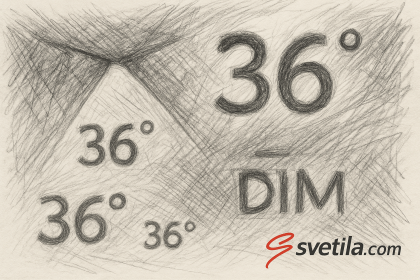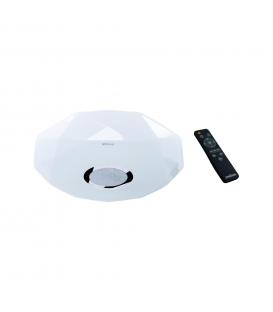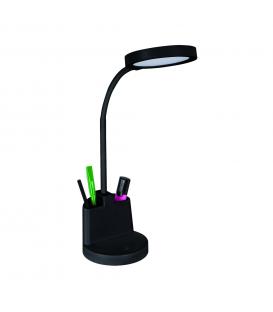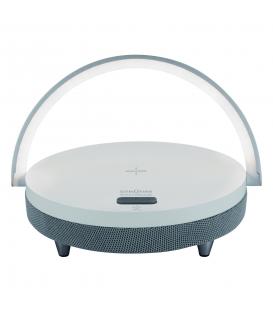Angle of the Light Emitted by a Reflector Lamp

Reflector lamps are a key component in modern lighting design, particularly when precision and directionality are essential. One of the most critical factors in their performance is the angle of the light emitted, commonly referred to as the beam angle. This angle plays a central role in how the light is distributed and perceived in a space.
What Is the Beam Angle?
The beam angle of a reflector lamp defines the spread of light emitted from the source, measured in degrees. It indicates how wide or narrow the cone of light will be once it leaves the lamp. A narrow beam angle will create a focused spotlight, while a wide beam angle produces a broad wash of light.
This angle is determined by the design and shape of the internal reflector, which directs the light by using reflective surfaces to guide it outward in a controlled manner. By applying the law of reflection, the lamp's internal geometry shapes the light path to achieve the desired output.
Types of Beam Angles and Their Uses
Different applications require different beam angles. Here is an overview of the most common beam angle categories and where each is typically used:
| Beam Angle Type | Angle Range | Typical Use Case |
|---|---|---|
| Very Narrow Spot (VNSP) | 5° – 15° | Accent lighting, highlighting artwork, narrow objects |
| Narrow Spot (NSP) | 15° – 25° | Retail displays, highlighting signage |
| Spot (SP) | 25° – 40° | Task lighting, focused illumination in galleries or kitchens |
| Flood (FL) | 40° – 60° | General room lighting, wall washing |
| Wide Flood (WFL) | 60° – 120° | Ambient lighting, large area coverage |
Why Beam Angle Matters
Choosing the correct beam angle is crucial for effective lighting. An unsuitable angle can lead to hotspots, uneven illumination, or wasted energy. Here are some key considerations:
- Targeted illumination – ideal for lighting specific objects or features
- Mood and atmosphere – wider beams create softer, more even lighting
- Efficiency – correct angles help avoid wasted light and save energy
Tips for Selecting the Right Beam Angle
When choosing a reflector lamp, consider the following:
- Purpose of lighting – are you highlighting a feature or lighting a space?
- Distance from surface – the farther the lamp is, the wider the beam spreads
- Ceiling height – high ceilings may require narrower beams for precision
- Room layout – consider how furniture or walls may block or reflect light
Conclusion
The beam angle of a reflector lamp is more than just a technical detail—it's a vital design choice that impacts functionality, aesthetics, and efficiency. Whether you're lighting a painting, a retail display, or a cozy living room, understanding and choosing the right angle ensures that your lighting achieves its full potential.
By carefully matching the beam angle to your specific needs, you can create well-lit spaces that are both beautiful and practical.






